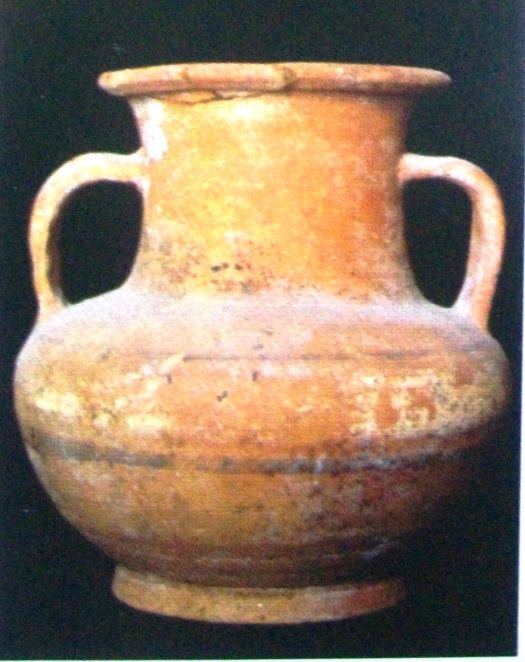Amphora
The amphora was part of the grave goods of tomb 11 AR from the Phoenician-Punic necropolis of Sulky, and may be dated to the fifth century B.C.

Made of reddish clay, it has a characteristic decoration with parallel black lines, on the rim, between the rim and the neck, and at various heights of the body. The handles begin just under the rim and are attached to the shoulder. The ovoid body lengthens and narrows down at the bottom so as to be slightly out of proportion. The bottom is flat (fig. 2).

This belongs to the so-called domestic amphorae, i.e. used in the home in order to contain liquids, but also widely distributed in funerary environments. In the necropolis of Sulky, along with ritual jugs, they constitute the essential kit which accompanied the dead on their last journey (fig. 3).

The amphorae found in Sulky belong to various kinds and have been found in different shapes, from classical ones linked to oriental traditions, to those of Greek imitation (figs. 4-5).


What were home amphorae used for? They were containers which were mainly used to contain liquids, such as water or milk, in the home. When they were placed next to the deceased in the grave, their role remained the same, since it was thought that they could contain liquids which would quench their thirst in the afterlife: for this reason, the amphorae were equipped with small clay ladles used to collect the liquid (fig. 6).

Bibliografia
- P. BARTOLONI, Il museo archeologico comunale “F. Barreca” di Sant’Antioco, Sassari 2007.
- S. MUSCUSO, Il Museo “F. Barreca” di Sant’Antioco: le tipologie vascolari della necropoli di Sulky = Sardinia Corsica et Baleares Antiquae VI, 2008, pp. 9-39.

 VR
VR